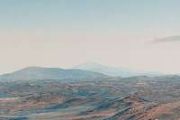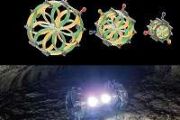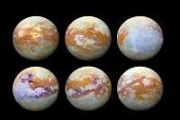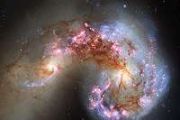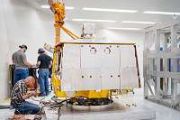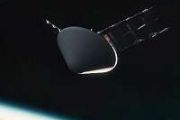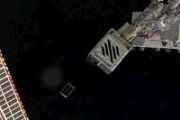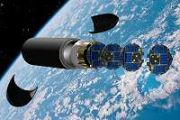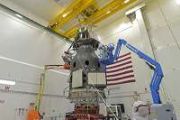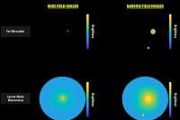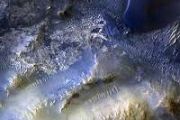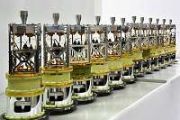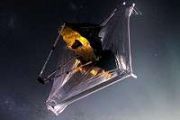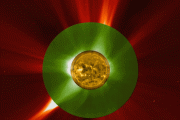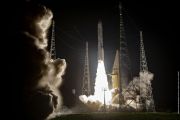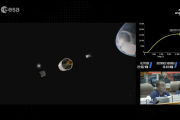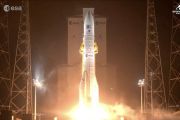
Copernical Team
Neo Space Group to acquire UP42 earth observation platform from Airbus
 Neo Space Group (NSG), Saudi Arabia's premier commercial space services company and backed by the Public Investment Fund (PIF), has signed a definitive agreement to acquire UP42, Airbus Defence and Space's earth observation (EO) digital platform. The transaction remains subject to regulatory approvals and customary closing conditions. UP42, launched by Airbus in 2019 in Berlin, Germany, offers a
Neo Space Group (NSG), Saudi Arabia's premier commercial space services company and backed by the Public Investment Fund (PIF), has signed a definitive agreement to acquire UP42, Airbus Defence and Space's earth observation (EO) digital platform. The transaction remains subject to regulatory approvals and customary closing conditions. UP42, launched by Airbus in 2019 in Berlin, Germany, offers a Redwire teams with CrunchLabs and Mark Rober for Space Selfies project and STEAM
 Redwire Corporation (NYSE: RDW), a prominent space infrastructure company, has teamed up with YouTuber Mark Rober and CrunchLabs to deliver advanced camera technology for the SAT GUS mission. The mission, spearheaded by Rober in collaboration with CrunchLabs, Google Pixel, and T-Mobile, is centered on a satellite designed to capture selfies in space, creating a unique opportunity for global STEA
Redwire Corporation (NYSE: RDW), a prominent space infrastructure company, has teamed up with YouTuber Mark Rober and CrunchLabs to deliver advanced camera technology for the SAT GUS mission. The mission, spearheaded by Rober in collaboration with CrunchLabs, Google Pixel, and T-Mobile, is centered on a satellite designed to capture selfies in space, creating a unique opportunity for global STEA AST SpaceMobile teams with Cadence to drive space-based cellular broadband
 Cadence Design Systems, Inc. (Nasdaq: CDNS) and AST SpaceMobile, Inc. (Nasdaq: ASTS) have partnered to advance AST SpaceMobile's mission to deliver space-based high-speed internet connectivity worldwide, closing coverage gaps and enabling broadband access to underserved areas.
The collaboration centers on the AST5000 ASIC, a custom low-power chip integral to AST SpaceMobile's next-generati
Cadence Design Systems, Inc. (Nasdaq: CDNS) and AST SpaceMobile, Inc. (Nasdaq: ASTS) have partnered to advance AST SpaceMobile's mission to deliver space-based high-speed internet connectivity worldwide, closing coverage gaps and enabling broadband access to underserved areas.
The collaboration centers on the AST5000 ASIC, a custom low-power chip integral to AST SpaceMobile's next-generati Parsons and Globalstar demonstrate first software-defined LEO satellite solution
 Parsons Corporation (NYSE: PSN) and Globalstar (NYSE American: GSAT) have joined forces to deliver advanced satellite communication solutions tailored for public, government, and defense sectors. The collaboration also marked a milestone with the successful demonstration of Parsons' innovative software-defined satellite communication solution integrated with Globalstar's Low Earth Orbit (LEO) sa
Parsons Corporation (NYSE: PSN) and Globalstar (NYSE American: GSAT) have joined forces to deliver advanced satellite communication solutions tailored for public, government, and defense sectors. The collaboration also marked a milestone with the successful demonstration of Parsons' innovative software-defined satellite communication solution integrated with Globalstar's Low Earth Orbit (LEO) sa A caving expedition highlights the complexities of field research
 Lab-based research forms the foundation of modern scientific inquiry, but it often falls short in replicating real-world experiences. This limitation is particularly pronounced in fields like cognitive neuroscience and neuropsychology, where environmental stressors significantly impact human thought and behavior.
To bridge this gap, a team led by Concordia University researchers ventured i
Lab-based research forms the foundation of modern scientific inquiry, but it often falls short in replicating real-world experiences. This limitation is particularly pronounced in fields like cognitive neuroscience and neuropsychology, where environmental stressors significantly impact human thought and behavior.
To bridge this gap, a team led by Concordia University researchers ventured i Towards independent robotic exploration of ocean worlds
 NASA is advancing autonomous exploration to tackle one of its foremost goals - investigating the potential for life and habitability on ocean worlds. These missions focus on targets like Jupiter's Europa and Saturn's Enceladus, where subsurface liquid water could support life. Communication delays, extreme environments, and limited energy resources necessitate autonomous robotic systems for such
NASA is advancing autonomous exploration to tackle one of its foremost goals - investigating the potential for life and habitability on ocean worlds. These missions focus on targets like Jupiter's Europa and Saturn's Enceladus, where subsurface liquid water could support life. Communication delays, extreme environments, and limited energy resources necessitate autonomous robotic systems for such New planet in Kepler-51 system unveiled with JWST observations
 Astronomers have identified a fourth planet in the Kepler-51 system, a discovery led by researchers at Penn State and Osaka University using data from NASA's James Webb Space Telescope (JWST). The system, previously known for its three ultra-low density "super-puff" planets, gained a new dimension as the unexpected orbital behavior of Kepler-51d revealed the presence of an additional planet.
Astronomers have identified a fourth planet in the Kepler-51 system, a discovery led by researchers at Penn State and Osaka University using data from NASA's James Webb Space Telescope (JWST). The system, previously known for its three ultra-low density "super-puff" planets, gained a new dimension as the unexpected orbital behavior of Kepler-51d revealed the presence of an additional planet. New evidence of organic reservoirs found on Ceres
 Six years after NASA's Dawn mission completed its historic exploration of Ceres and Vesta, scientists continue to uncover remarkable insights about the largest bodies in the asteroid belt. A recent study led by the Instituto de Astrofisica de Andalucia (IAA-CSIC) reveals eleven new areas on Ceres that suggest the presence of a substantial internal reservoir of organic materials. This finding, ba
Six years after NASA's Dawn mission completed its historic exploration of Ceres and Vesta, scientists continue to uncover remarkable insights about the largest bodies in the asteroid belt. A recent study led by the Instituto de Astrofisica de Andalucia (IAA-CSIC) reveals eleven new areas on Ceres that suggest the presence of a substantial internal reservoir of organic materials. This finding, ba Purdue scientist expecting new world to reveal itself to Mars rover
 NASA's Mars 2020 rover mission and Purdue University planetary scientist Briony Horgan are approaching a new phase in the search for details about the red planet's history and potential for previously hosting life.
The mission's Perseverance rover is only weeks away from emerging from the 28-mile-wide Jezero Crater to explore new terrain. It's a point in the mission Horgan set her sights o
NASA's Mars 2020 rover mission and Purdue University planetary scientist Briony Horgan are approaching a new phase in the search for details about the red planet's history and potential for previously hosting life.
The mission's Perseverance rover is only weeks away from emerging from the 28-mile-wide Jezero Crater to explore new terrain. It's a point in the mission Horgan set her sights o NASA-led team links comet water to Earth's oceans
 Researchers have found that water on Comet 67P/Churyumov-Gerasimenko has a similar molecular signature to the water in Earth's oceans. Contradicting some recent results, this finding reopens the case that Jupiter-family comets like 67P could have helped deliver water to Earth.
Water was essential for life to form and flourish on Earth and it remains central for Earth life today. While some
Researchers have found that water on Comet 67P/Churyumov-Gerasimenko has a similar molecular signature to the water in Earth's oceans. Contradicting some recent results, this finding reopens the case that Jupiter-family comets like 67P could have helped deliver water to Earth.
Water was essential for life to form and flourish on Earth and it remains central for Earth life today. While some 
